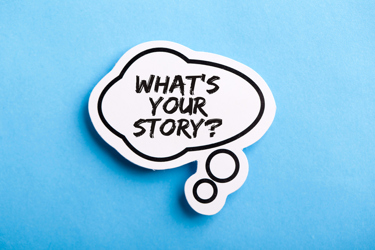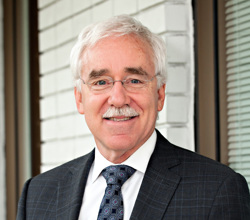"Who Are They?" A Biotech CEO's Timeless Question For CDMOs

By Louis Garguilo, Chief Editor, Outsourced Pharma

The question James E. Brown, President & CEO, DURECT (Nasdaq: DRRX) asked of CDMOs when he founded the company in 1998 remains perfectly operational.
“‘Who are they?’ is the most important question for me regarding our external partners,” he tells me from his corporate headquarters in Cupertino, CA.
“Communication per se is always important, but it's more about knowing details about who you're working with. Where did those individuals at that CDMO come from? What are their personal track records?”
DURECT’s lead candidate is DUR-928, in development for the treatment of acute organ injury and chronic liver disease – currently focusing on alcoholic hepatitis (AH) and nonalcoholic steatohepatitis (NASH), having shown positive results for AH in a recently concluded Phase 2a study.
Brown started out in the drug industry working for bigger organizations where he knew most everybody personally. The department heads had been in place for decades, and even many of the junior people had been there multiple years. Additionally, advanced internal control systems were solidly in place.
 James E. Brown President & CEO, DURECT (Nasdaq: DRRX) |
“You had this huge hierarchy of knowledge and experience you were able to bring to bear, for any kind of issue,” he recalls of those days.
At biotechs and smaller organizations, all that needs to be carried through to external development and manufacturing partners.
“The same as when I started many years ago,” Brown says, “my recommendation to someone starting out today in biotech is, if you're selecting a partner – whether it's an initial contract manufacturing group to work on the new API you're excited about or a product you need new packaging for – you need to ensure you're working with an experienced team of individuals. Get to know them and do your due diligence.”
He continues:
“How did those individuals end up at that CDMO in that position? They may have had careers in larger companies. Why they are working there specifically. Find out what that reason is – and whether it aligns with the way you want to approach your own work life.
“That's a very important piece. Find a kindred spirit. Once you do, you're off and running, because you can then function much more like you are part of the same organization.”
“You’re not only linked by contract. You’re linked by virtue of your approach to business and to each other, like true partners.”
People, Not Companies
That all sounds ideal. But with the workloads at CDMOs today, can your biotech of small or medium size actually reach that level of camaraderie with service providers? Do they give you the access, and the time?
“Sometimes you get it, sometimes you don't,” Brown responds. “But you have to look.”
He offers an analogy: “It's like anything else; no different than looking for a contractor to remodel your kitchen. If you’re talking with a big construction company and feel they won’t give you the attention, don’t select them. You want to find a group you have a connection with, and to who you can say: ‘I can trust you.’
“A large part of the selection process and the on-going working relationship has to do with learning to understand and getting to know people. “I can't stress that enough: It's who they are to begin with. Because this is the one thing you can't change.”
Brown also advises caution regarding the various conversations you will have with members of the CDMO, from the initial sales person, the legal department, the senior management … and then to the actual people doing the work. He suggests doing whatever you can to get early exposures to the people who will end up on your projects.
This raises the question: Does (CDMO) size matter?
“Sometimes larger organizations have an advantage in that they have institutional experience and excellent systems in place to ensure their quality,” explains Brown. “But they can also become bureaucratic, so it’s a double-edged sword.”
“Sometimes a small CDMO can be wonderful to work with – there’s a family-owned business feel. I've done some great things with very small businesses; we've had long relationships,” he says. “And I've had other small-size contractors that have changed ownership, which can be a challenge. The bottom line is whether it’s a large or small CDMO the key to success is working with good people.”
He adds, “In larger companies, divisions may be sold off. But even here, what is important is where do the handful of people you have that connection with end up? Are they going to go somewhere else? If they do, maybe you should follow them.”
“I truly believe more in the people, than in anything else. So I tend to follow good people.”
A New World?
Circling back to the start of our discussion, I mention to Brown that when he started his own biotech in 1998, “CDMOs” for the most part did not exist. You had CMOs focused on later stage manufacturing, and earlier stage CROs, with a gap in the middle. Have the times changed the practice of outsourcing drug development and manufacturing?
Brown takes a moment to consider the premise.
“You know, it’s interesting to think about,” he finally says. “It is different than it used to be in some ways.”
“Years ago, there were more family-owned, smaller organizations, and then the bigger companies providing a lot of options. Over time, consolidation occurred reducing the number of smaller organizations. More recently, post-acquisitions, the larger organizations have spun off divisions and facilities. These new independent entities can be excellent partners.
“While this reshuffling is constant, often the same people are still there, but the plaque on the door has changed. As an example, a former Upjohn facility gets spun out, is independent for a while, and then gets acquired and put together with a former Abbott facility. Instead of being part of their pharma parents, now they are a new contract manufacturing company onto themselves. It has certainly been an interesting environment within which to work.”
And we know how Brown has surfed the waves of change. “I keep track of the people more than the name on front of the building.”
He suggests you do, too.
